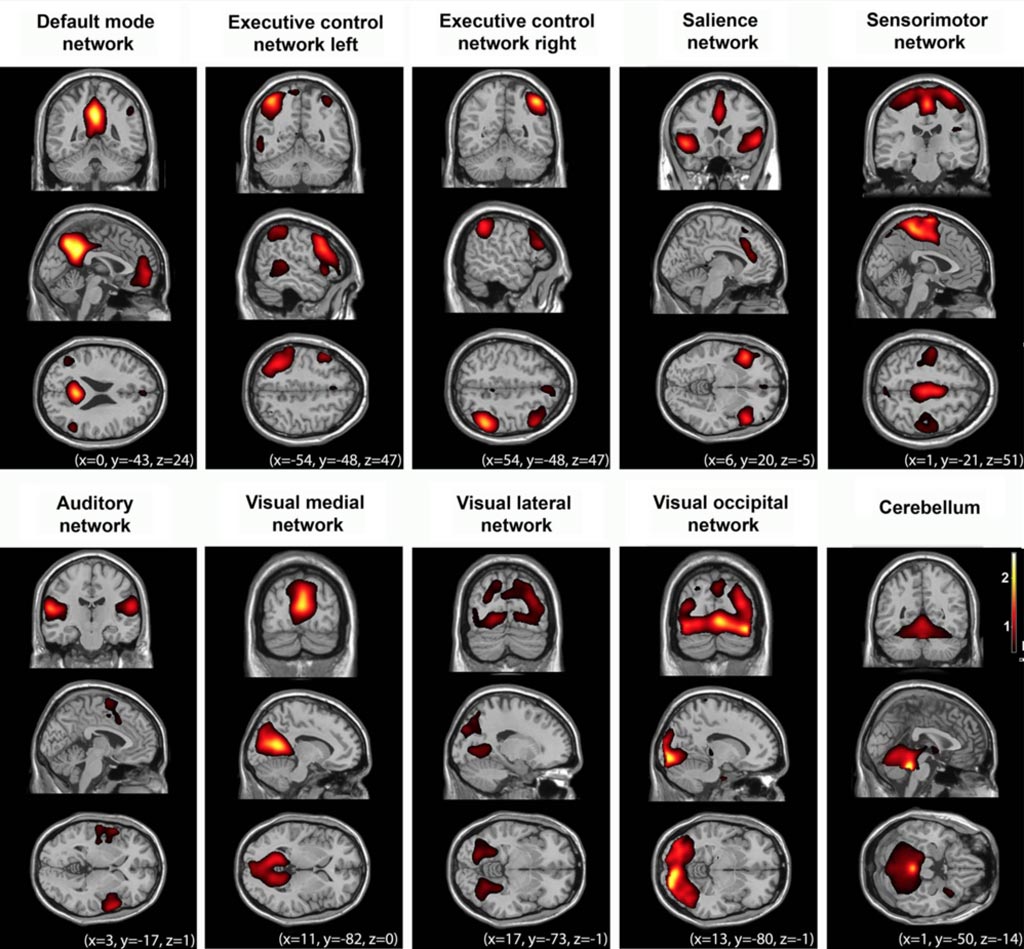Brain Scans May Predict Cognitive Behavioral Therapy Success
By MedImaging International staff writers
Posted on 05 Mar 2018
Functional magnetic resonance imaging (fMRI) and machine learning could enable therapists to tailor cognitive behavioral therapy (CBT) for individual patients, claims a new study.Posted on 05 Mar 2018
Researchers at the University of California, Los Angeles (UCLA; USA) conducted a clinical study that initially collected the resting-state fMRI scans of the brains of 42 people with obsessive-compulsive disorder (OCD), 18 to 60 years of age, before and after four weeks of intensive, daily, CBT. The researchers then leveraged machine learning with cross-validation in order to assess the power of functional connectivity (FC) patterns in predicting individual post-treatment OCD symptom severity.

Image: A functional MRI scan, showing 10 large-scale brain networks (Photo courtesy of Wikimedia).
The results revealed that pretreatment FC patterns within the default mode network (DMN) and visual network significantly predicted post-treatment OCD severity, explaining up to 67% of the variance. These networks were also stronger predictors than pretreatment clinical scores. In addition, machine learning predicted which patients would fail to respond to CBT with 70% accuracy, and also predicted the final symptoms assessment scores on within a small margin of error, regardless of how patients responded to treatment. The study was published on February 12, 2018, in Proceedings of the National Academy of Sciences (PNAS).
“This method opens a window into OCD patients' brains to help us see how responsive they will be to treatment. The algorithm performed far better than our own predictions,” said senior author clinical neuroscientist Jamie Feusner, MD. “OCD treatment could someday start with a brain scan. The cost to perform and interpret a brief MRI is several hundred dollars, but that expense could help people who are unlikely to be helped by intensive CBT to avoid the cost of that treatment.”
Brain areas are linked together in a large-scale network identified by their function, providing a coherent framework for understanding cognition. Four main networks have been identified; the dorsal attention network (DAN), which is involved in voluntary deployment of attention and reorientation to unexpected events; the default-mode network (DMN), which is active during introspection; the salience network (SN), which monitors the salience of external inputs and internal brain events; and the executive control network (ECN), which is engaged during cognitive tasks that require externally-directed attention, such as working memory, relational integration, response inhibition and task-set switching.
Related Links:
University of California, Los Angeles














